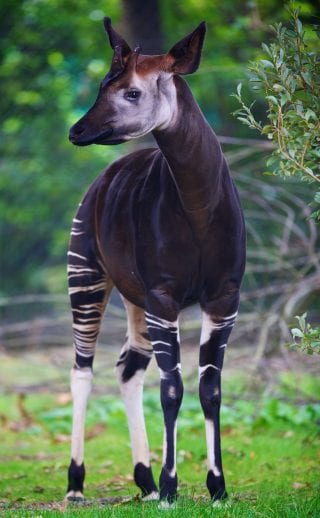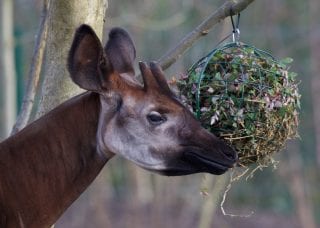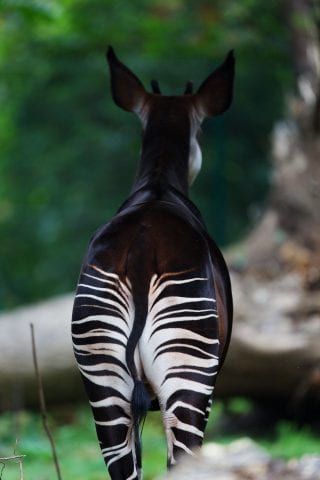Fun Facts
Satellite Ears
An okapi's large ears can swivel around to pick up sounds in the forest.
Secret Hideaway
Okapi mothers hide their newborn calves in one spot under dense vegetation and return to them to nurse. Okapi calves also avoid being found by predators by not defecating (pooping) until they are at least one month old!
Long Tongue
The okapi's tongue is long enough to reach its eyes and ears.
A Recent Discovery
An okapi's stripes help break up its body outline, making it hard to spot – so hard that Western scientists didn’t know the species existed until 1901!



